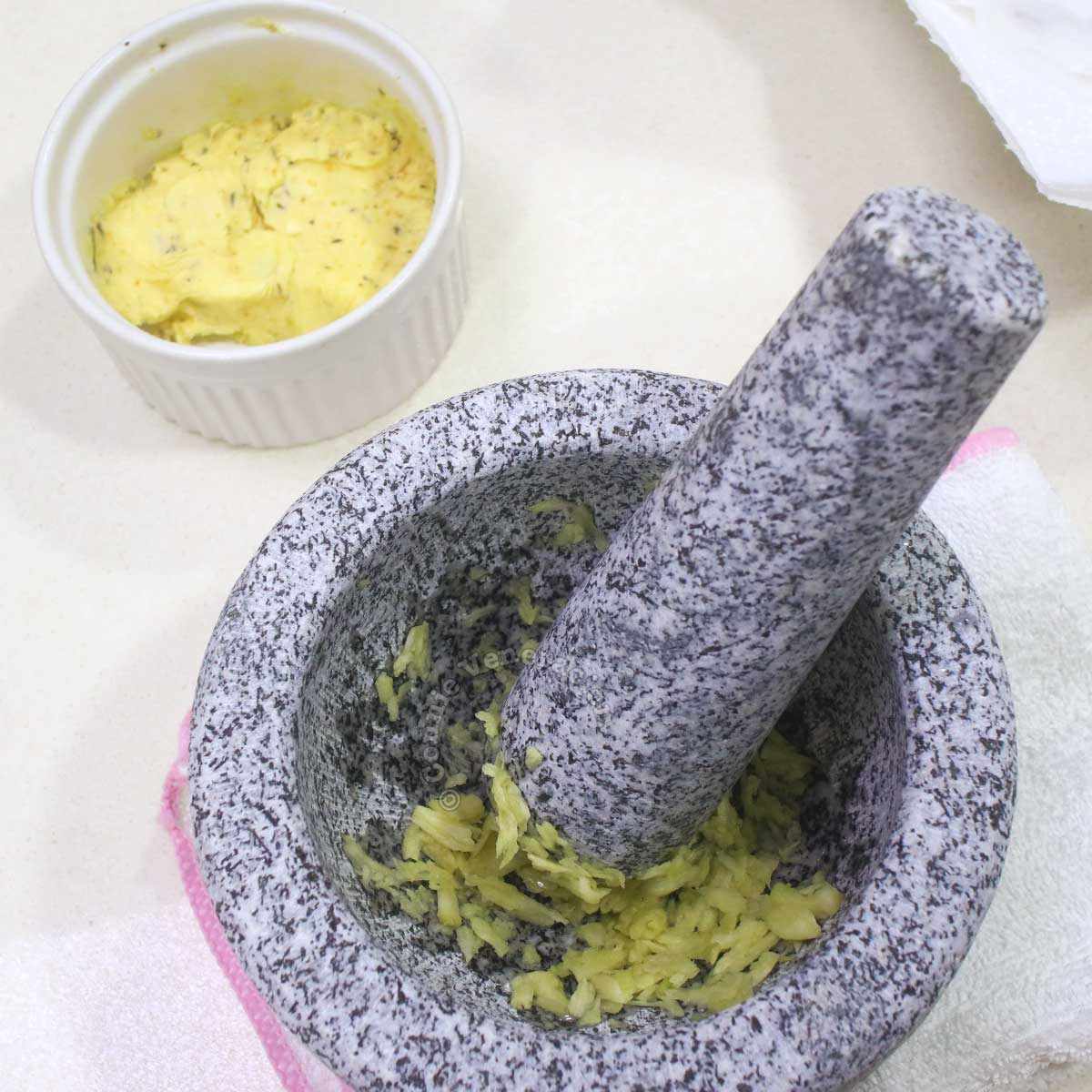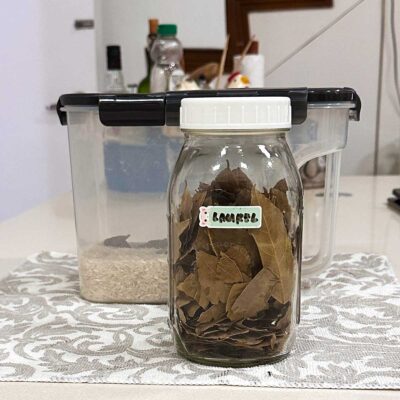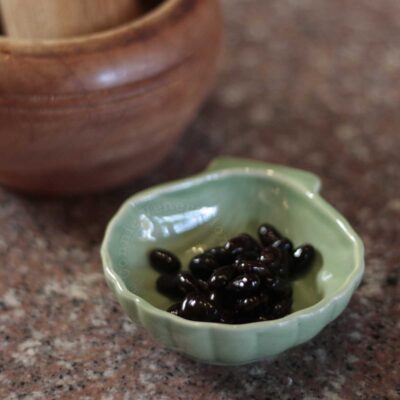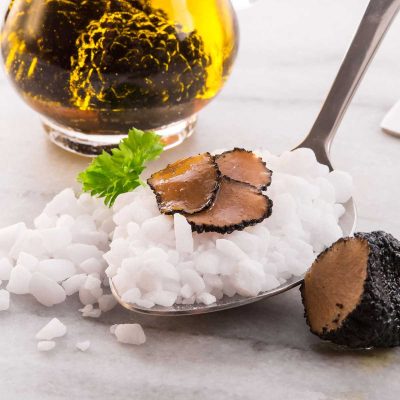Most of us know that the mortar and pestle is great for pounding garlic but what other uses do they serve?
In Southeast Asia, it is the tool for grinding spices and herbs before they are stirred into hot oil for making a spice base.
 In Italy, the traditional way to make pesto is to grind the basil, garlic and pine nuts using a mortar and pestle. Olive oil is drizzled in little by little until the mixture turns pasty. Grated Parmesan cheese is stirred in afterwards.
In Italy, the traditional way to make pesto is to grind the basil, garlic and pine nuts using a mortar and pestle. Olive oil is drizzled in little by little until the mixture turns pasty. Grated Parmesan cheese is stirred in afterwards.
In Mexico, the mortar and pestle is the traditional tool for making guacamole.
In regions where rice is grown, the traditional way to separate the grain from the husk is to pound the palay using a stone grinder that resembles an oversized mortar and pestle. Before there were rice mills and machines, it was the standard tool.
Despite its early association with food preparation, the mortar and pestle have also long been used as drug paraphernalia to pound pills.
Do the mortar and pestle have a place in a modern kitchen?
In today’s world with all modern food appliances at our fingertips, do the mortar and pestle really have any room in the kitchen of the average cook? Well, look at it this way. If you’re making two tablespoons of gremolata for your osso buco, do you really want to take out the food processor and wash all its moveable parts when you can use the mortar and pestle, and wash only two small items without grooves and crevices?
Where did the mortar and pestle originate?
According to The Origins and development of ground stone assemblages in Late Pleistocene Southwest Asia, tools used for grinding began to appear during the Upper Paleolithic era (Late Stone Age) which covers the period between 50,000 and 10,000 years ago.
The linked article also says grinding tools like the mortar and pestle “have long been recognized as a central feature in the development of early farming communities in the Near East.” Although the term “Near East” fell into disuse long ago, according to National Geographic, Near East is what we know today as the Middle East and “it is generally accepted as comprising the countries of the Arabian Peninsula, Cyprus, Egypt, Iraq, Iran, Israel, Jordan, Lebanon, Palestinian territories, Syria, and Turkey. At its maximum it would extend from Morocco to Bangladesh.”
Even today, there are still places where the oversized mortar and pestle are used to pound palay. In some cases, for rituals and ceremonies; in other cases, out of necessity in places where modern machinery is not accessible or affordable. Use the keyphrase “pounding palay” to search Google images and see what I mean.
Variants of the mortar and pestle were also in use beyond the Near East. The Mexican molcajete, South American matete and the South Asian batan are all, in essence, mortars and pestles.
For home cooking, of what material should the mortar and pestle be?
A bowl with a smooth surface like polished stone or wood is NOT ideal. You want texture against which food gets easily smashed when pounded and ground.
On hindsight, it seems obvious. Common sense, in fact. Why would anyone use a bowl with a smooth and polished surface when the chance is huge that food will slide when pounded? But in a country where polished marble is the first choice, it wasn’t easy setting aside the belief that it is the best material for kitchen use.
So, what do we use today? We use two kinds. One is unpolished granite (first photo in this post). The other is the Japanese suribachi. The bowls are textured for easier grinding.
How did we discover that texture is important? Travel and experience.
Suribachi
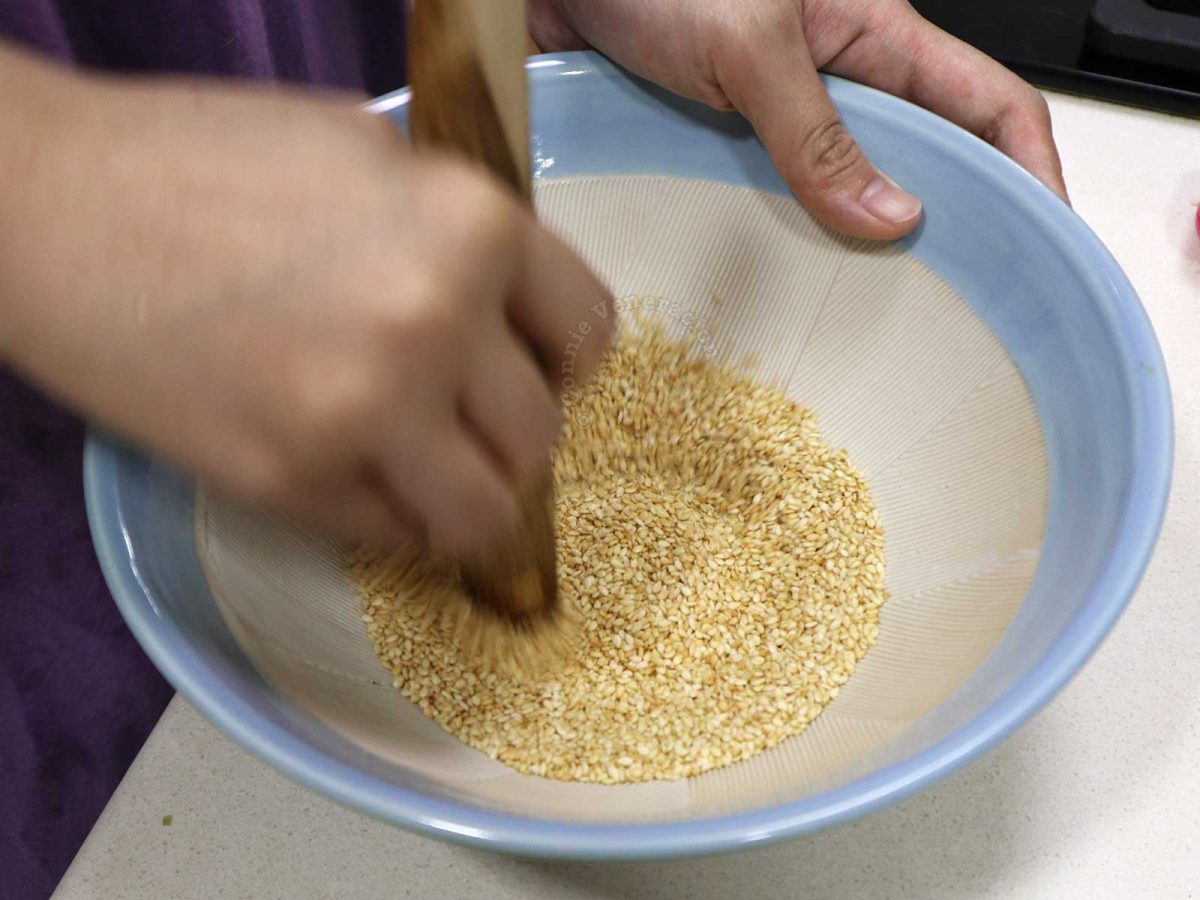
The bowl is suribachi; the pestle is surikogi. My daughter, Alex, bought her first pair in Japan, and she has bought at least two more from local sellers. What makes it so special? I’ll tell you a story.
One night in Osaka, it was so late that as we walked back to the apartment, we were prepared to buy dinner at a convenience store. But we passed by Matsunoya which was still open despite the late hour. The food looked good.
A nice lady greeted us at the door of Matsunoya and helped us order using the automated machine near the entrance then showed us to a table. We sat down and when our food was served by the same nice lady, there was a bowl with toasted sesame seeds in it. With her hands and a broad smile, she showed us how to use it.
Yes, a suribachi and surikogi on the table. We did as she instructed, and… Oh, boy. If toasted sesame seeds are aromatic and packed with flavor, grinding them doubles the tantalizing smell and taste. Amazing what a few twirls of the wrist can do with the right equipment.
So, yes, we scoured the Doguyasuji (a.k.a. Kitchen Street) in Osaka for the bowl. We had no idea what it was called so we had to go through the shelves of every shop. A day before our flight back home, Alex found it. Glazed outside and unglazed inside, suribachi, a Japanese mortar, is scored inside with spiraling ridges.
Mortar and pestle made of unpolished granite
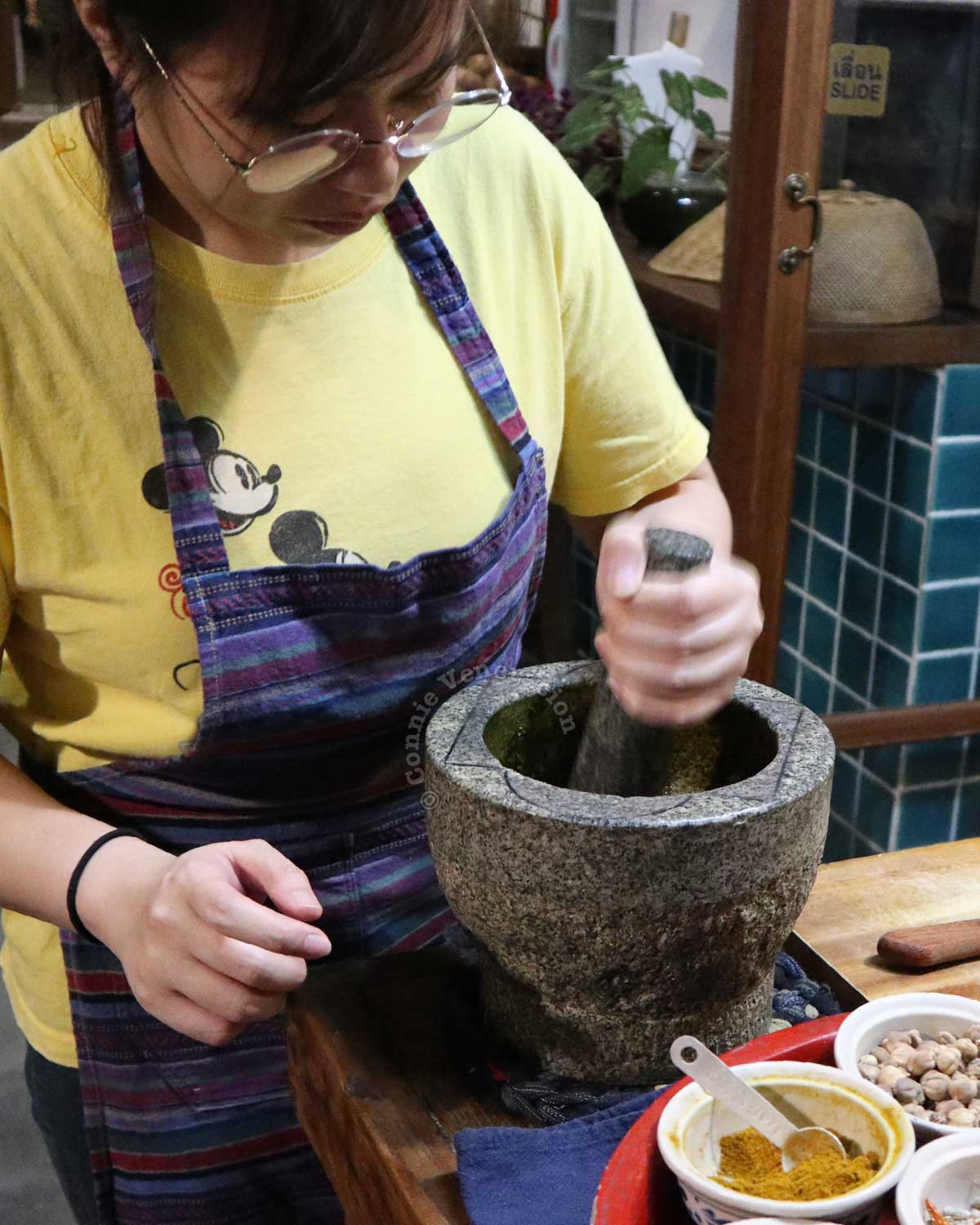
In Chiang Mai, Alex and I attended a cooking class where we learned to make northern Thai dishes the authentic way. That means starting each dish by pounding and grinding herbs and spices. We were each assigned a mortar and pestle to do the job.
My first reaction was, oh my, what a big and heavy bowl. But as I began the pounding and the grinding, I realized how easy it was. The size of the bowl was one factor. But the more significant thing was that the stone was coarse. So unlike the polished marble that my grandparents and my father used, and which I always thought was the best choice.
Obviously, the sheer weight of both the mortar and pestle made it impossible to even consider buying a pair, and stuffing it in the luggage to bring home. So, I just made a mental note: find mortar and pestle made of unpolished granite back home.
It was easier said than done though. Polished marble is still the default material for mortal and pestle in the Philippines. Wood is a close second. I had to scour online shops. The first ones I found cost an arm and a foot, so I waited. A few months later, I was able to get them at a reasonable price. Not as large as the ones we used in Chiang Mai but large enough for home cooking.
What is the correct way to use the mortar and pestle?
The mortar and pestle set is a rotary hand grinder. If you’re just pounding your food in the bowl using the pestle, you’re doing it wrong. The grinding consists of two steps:
First, pound the food.
Second, after the food has been broken into smaller pieces, grind it using continuous circular motions. It’s all in the wrist. Think of your wrist as the axis and your hand holding the pestle goes ’round and ’round. Keep at it until the food is ground to the desired consistency.
Simple but effective, eh? And so fascinating how the Stone Age people came up with the idea that we know today as mortar and pestle.

